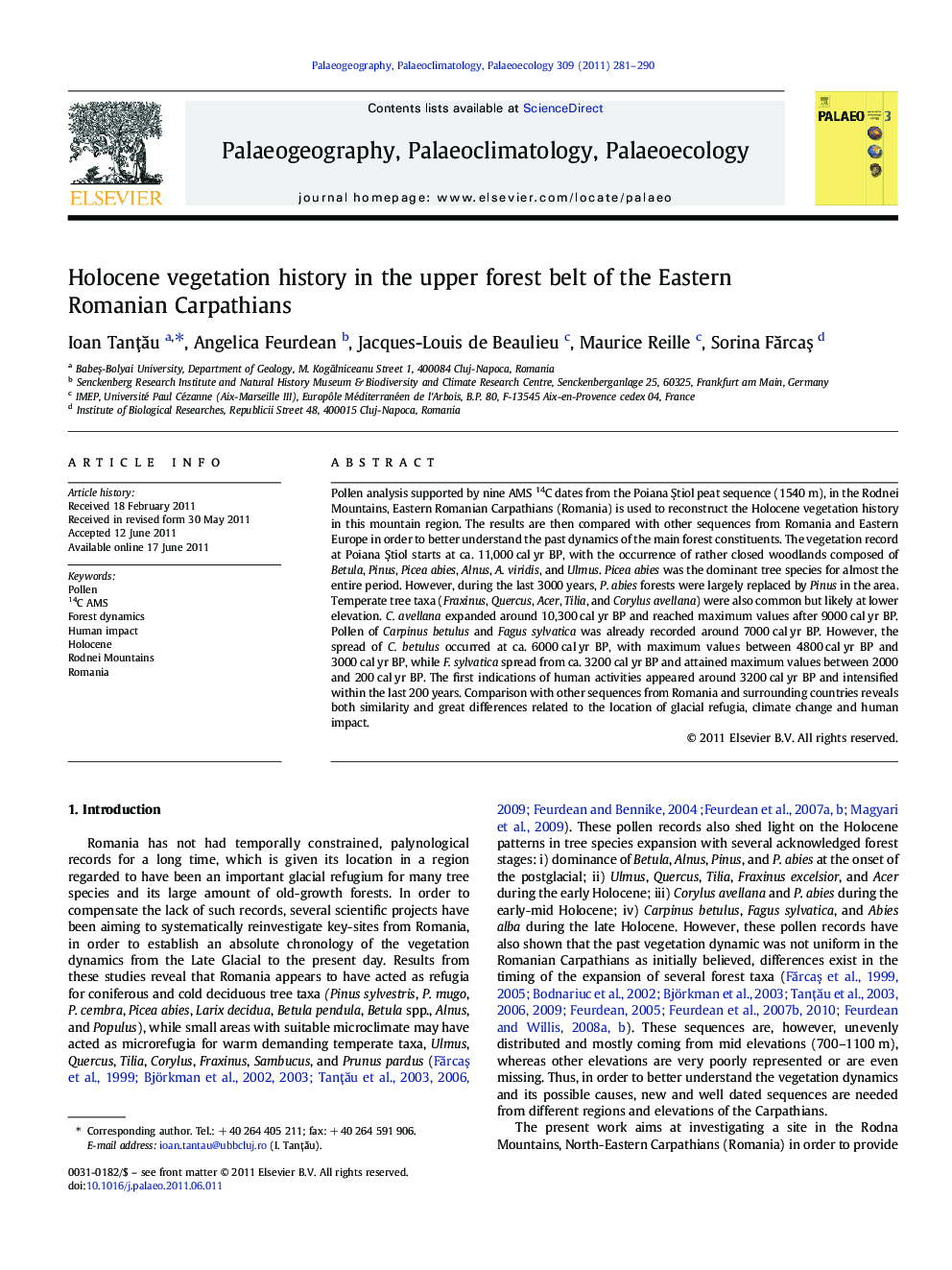| Article ID | Journal | Published Year | Pages | File Type |
|---|---|---|---|---|
| 4467254 | Palaeogeography, Palaeoclimatology, Palaeoecology | 2011 | 10 Pages |
Pollen analysis supported by nine AMS 14C dates from the Poiana Ştiol peat sequence (1540 m), in the Rodnei Mountains, Eastern Romanian Carpathians (Romania) is used to reconstruct the Holocene vegetation history in this mountain region. The results are then compared with other sequences from Romania and Eastern Europe in order to better understand the past dynamics of the main forest constituents. The vegetation record at Poiana Ştiol starts at ca. 11,000 cal yr BP, with the occurrence of rather closed woodlands composed of Betula, Pinus, Picea abies, Alnus, A. viridis, and Ulmus. Picea abies was the dominant tree species for almost the entire period. However, during the last 3000 years, P. abies forests were largely replaced by Pinus in the area. Temperate tree taxa (Fraxinus, Quercus, Acer, Tilia, and Corylus avellana) were also common but likely at lower elevation. C. avellana expanded around 10,300 cal yr BP and reached maximum values after 9000 cal yr BP. Pollen of Carpinus betulus and Fagus sylvatica was already recorded around 7000 cal yr BP. However, the spread of C. betulus occurred at ca. 6000 cal yr BP, with maximum values between 4800 cal yr BP and 3000 cal yr BP, while F. sylvatica spread from ca. 3200 cal yr BP and attained maximum values between 2000 and 200 cal yr BP. The first indications of human activities appeared around 3200 cal yr BP and intensified within the last 200 years. Comparison with other sequences from Romania and surrounding countries reveals both similarity and great differences related to the location of glacial refugia, climate change and human impact.
► Pinus, Picea abies, Ulmus, Betula were widespread at 11,000 cal yr BP. ► Corylus expanded at 10,000 yr BP, Carpinus at 6500 yr BP, Fagus at 3200 cal yr BP. ► Human impact is visible from 3200 yr BP onwards. ► Comparison with other sequences reveals similarity but also differences. ► Differences are related to location of glacial refugia, climate change, human impact.
